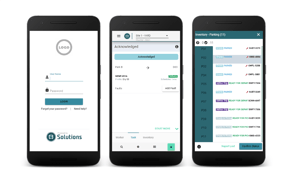How Smart Dock and Yard Management Creates Sustainable Company Practices

Most big-size companies still use spreadsheets and manual documents to manage yard operations. This old and out-of-date operating style has advantages like simplicity and a shorter learning curve. But, it has more than its fair share of issues as well. These issues can range from suboptimal outputs to some serious human mistakes. It only takes a few human errors to cost millions of dollars in damages.
It is 2022, and today, modern businesses use innovative yard management solutions as part of their supply chain strategy. These solutions optimize warehouse and transportation management processes and reduce waste in transportation and labor costs. Proper planning of the activities through these solutions in the yard helps to cut interruptions. They also make the operations greener and supply chains sustainable. Greener and Sustainable supply chains lead to lower carbon emissions for the planet. Smart Yard Management makes it a win-win proposition.
How does Smart Dock Management Help in Sustainable Operations?
We hear about organizations becoming carbon neutral from design to operations. Especially in the post-COVID-19 world, every business wants to focus on sustainability and has become more cognizant of their environmental responsibilities. With the technological advances, companies now have many options for cost-effective, long-term solutions. Sustainable logistics operations should not be an exception but should be built into the supply chain design. Studies suggest that consumers also prefer sustainable brands when given an option.
What strategies can a company use to improve sustainability through intelligent dock management? Here are three suggestions.
1. Data-enabled Dock Management
 Innovative data-enabled docking management solution for material and vehicle movement has excellent advantages. Businesses can operate more efficiently by putting data at the center, allowing businesses to increase visibility and optimize operations. They can check docking in real-time and reduce turn-around time. Additionally, companies may reduce dwell time and less-than-truckload (LTL) loads, making operations environmentally and cost-friendly at the same time.
Innovative data-enabled docking management solution for material and vehicle movement has excellent advantages. Businesses can operate more efficiently by putting data at the center, allowing businesses to increase visibility and optimize operations. They can check docking in real-time and reduce turn-around time. Additionally, companies may reduce dwell time and less-than-truckload (LTL) loads, making operations environmentally and cost-friendly at the same time.
The teams also get process dashboards that work in real-time. These serve as a great tool that adds to the visibility. Such visibility can be vital in big warehouses and ports, as it can highlight bottlenecks in the operations. Such highlights help the warehouse managers to respond and resolve them faster.
2. Integrated Dock Management Reduces Paperwork
 There are several advantages to yard management and the automation it can bring. Automated order processing saves time while avoiding mistakes and scaling operations. An integrated dock management solution also eliminates the need for paper forms. These forms can be for the shipment or about the schedule of the vehicles. Any transaction can be issued, received, and kept electronically with docking management. From the purchase orders to shipping manifests to bills, such automation can save a lot of both paper and time.
There are several advantages to yard management and the automation it can bring. Automated order processing saves time while avoiding mistakes and scaling operations. An integrated dock management solution also eliminates the need for paper forms. These forms can be for the shipment or about the schedule of the vehicles. Any transaction can be issued, received, and kept electronically with docking management. From the purchase orders to shipping manifests to bills, such automation can save a lot of both paper and time.
3. Combining Yard Management Solutions with IoT Based Facilities Management
Busy loading docks are a sign of a healthy business, but the continuous opening and closing of the dock can pose several temperature and exposure-related issues. The most significant risk can appear when the goods are exposed to the external environment. Allowing a facility to be exposed for longer can be dangerous, especially in sectors like food and pharmaceutical, where temperature control is critical.
Intelligent equipment integrated with yard management solutions can reduce such risks. For example, high-speed doors with sensors can be used. Such devices also give helpful information on energy usage patterns. For example, when combined with IoT, it is possible to determine which facility areas are wasting energy. This data enables facility managers to make data-driven decisions that can enhance energy efficiency and reduce related expenses.
Facility managers, for example, may analyze energy trends. They can use customizable comparisons by week, month, or year. This summary of energy usage comparison can assist managers in identifying inefficiencies, for example, excessive openings, average cycle duration, and erroneous signals. If carefully monitored, these inputs help plug gaps in energy usage, for instance, when a door opens but nothing is detected.
Businesses must choose an intelligent platform to address rising global supply chain needs. It should help them transition from reactive to proactive supply chain management. When looking for a yard management system, choosing one that only automates paperwork is not enough. C3 Solutions provides the most advanced yard management with end-to-end insights.
Please get in touch with us to learn more about C3 Solutions. It can help you take every element of your yard management to the next level.
